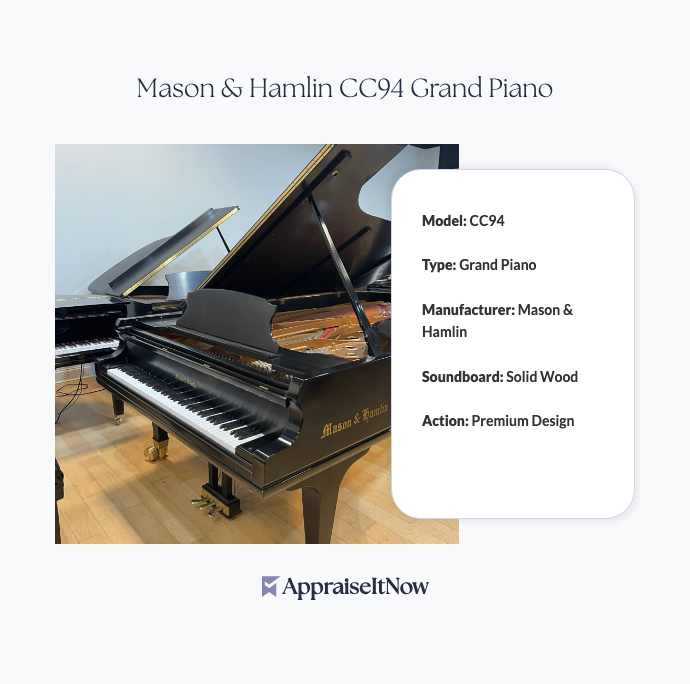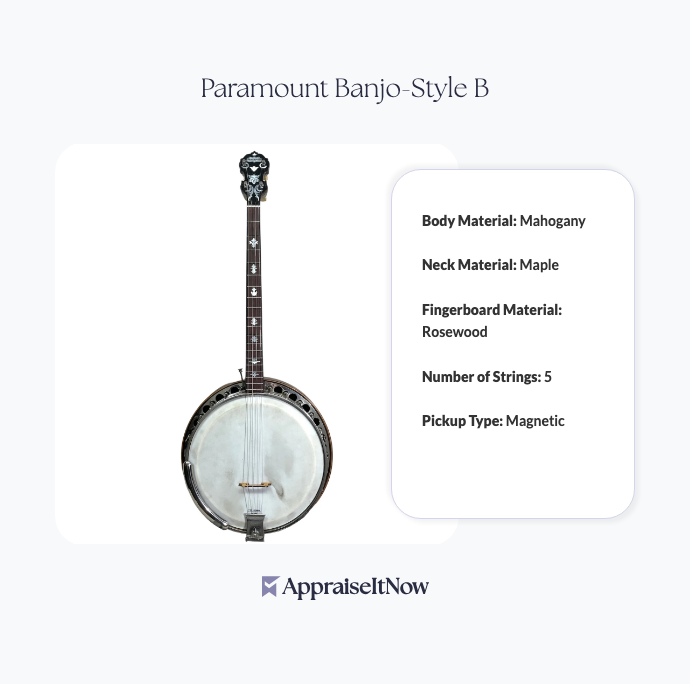<h1>How to Get Your Gibson Harp Guitar Style U Appraised</h1>
<p>The Gibson Harp Guitar Style U represents one of the most distinctive and sought-after instruments in vintage guitar collecting, commanding prices between <strong>$8,000 and $12,000</strong> in today's market. If you own one of these rare instruments or are considering acquiring one, understanding how to properly appraise it ensures you have accurate documentation for insurance, sale, or collection management purposes.</p>
<h2>Understanding the Gibson Harp Guitar Style U's Market Position</h2>
<p>First introduced in <strong>1906</strong>, the Gibson Harp Guitar Style U emerged during a period of extraordinary innovation in stringed instrument design. The instrument combines traditional guitar craftsmanship with harp-like design elements, featuring additional strings that create unique tonal qualities distinguishing it from conventional guitars. Gibson's decision to produce this limited-run instrument reflected the era's experimental approach to musical design, making each surviving example a genuine collector's item.</p>
<p>The question <em>"What is the point of a harp guitar?"</em> yields valuable insight into your instrument's appraisal value. These instruments were engineered to produce resonant, ethereal tones impossible to achieve on standard guitars. Professional musicians recognized their unique sonic capabilities, elevating them from novelty items to serious musical tools. This functionality, combined with their rarity, drives significant collector demand today.</p>
<div class="callout tip"><p><strong>Market Insight</strong></p>
<p>Gibson Harp Guitar Style U models with documented provenance demonstrating professional use or ownership can command 15-25% premiums above standard market valuations.</p></div>
<h2>Key Specifications That Impact Appraisal Value</h2>
<p>When assessing your Gibson Harp Guitar Style U, appraisers examine specific technical features that directly influence worth. The instrument's construction from <strong>premium tonewoods</strong> creates the acoustic properties collectors value, while its distinctive harp-like design remains instantly recognizable among vintage guitar enthusiasts.</p>
<p>The presence of additional sympathetic strings distinguishes the Style U from other Gibson models, producing a resonance pattern that audiophiles and musicians specifically seek. These extra strings require specialized maintenance knowledge, which paradoxically increases desirability among serious collectors willing to invest in proper care. Your instrument's original hardware, including the specialized bridge and tailpiece required for harp-guitar construction, significantly affects appraisal value—reproduction or replacement components reduce worth by 20-30%.</p>
<h2>Condition Assessment and Documentation</h2>
<p>Determining your Gibson Harp Guitar Style U's current condition requires professional evaluation of multiple factors. Examining the original finish integrity, checking for structural issues like top cracks or bracing damage, and verifying that all original components remain in place all factor into accurate valuation. When exploring <a href="/types/personal-property">personal property appraisals</a>, understanding condition grading becomes essential for insurance and documentation purposes.</p>
<p>The year of manufacture matters considerably. Early Gibson Harp Guitars from 1906-1910 typically command higher valuations than later examples due to superior tonewoods and more refined construction techniques. Serial number verification helps establish authenticity and production date, information critical for legitimate appraisals. Unlike general <a href="/types/antique-furniture">antique furniture</a> valuation that focuses primarily on aesthetic appeal, vintage guitar appraisals demand technical acoustic knowledge to properly assess tonal characteristics and construction quality.</p>
<div class="callout note"><p><strong>Documentation Priority</strong></p>
<p>Gather any original purchase receipts, previous ownership records, or performance history. This provenance documentation directly impacts your appraisal's final valuation and professional credibility.</p></div>
<h2>Rarity and Collector Demand</h2>
<p>The Gibson Harp Guitar Style U occupies a unique position in the vintage instrument market due to its limited production run. While exact production numbers remain difficult to verify, surviving examples numbered in the low hundreds across all models and years. This scarcity means each authenticated example carries inherent value to collectors specializing in rare stringed instruments, similar to how <a href="/types/memorabilia-and-collectibles">memorabilia and collectibles</a> appreciate based on supply limitations.</p>
<p>Collector interest in vintage Gibson instruments remains exceptionally strong, with serious enthusiasts seeking complete collections representing the company's most innovative designs. Your Style U represents precisely the type of distinctive instrument that appeals to museum curators, professional session musicians, and wealthy collectors building comprehensive vintage guitar collections. Understanding <em>"Who plays harp guitar?"</em> reveals your instrument's potential market—contemporary musicians exploring unconventional techniques actively seek these instruments for both performance and recording applications.</p>
<h2>The Professional Appraisal Process</h2>
<p>Obtaining a certified appraisal for your Gibson Harp Guitar Style U requires working with specialists possessing both stringed instrument expertise and market knowledge. Professional appraisers examine the instrument in person, documenting its condition through detailed photography and written description. They verify construction details, assess acoustic properties, and research comparable recent sales to establish fair market value.</p>
<p>The appraisal report should include high-resolution photographs from multiple angles, detailed condition notes addressing the instrument's top, back, sides, neck, and hardware, and a comprehensive market analysis comparing your specific example to recent comparable sales. When seeking <a href="/blog/appraising-musical-instruments-determining-the-worth-of-melodic-investments">musical instrument appraisals</a>, ensure the appraiser holds credentials in vintage guitar valuation and understands the specialized knowledge required for harp guitar assessment.</p>
<div class="callout tip"><p><strong>Professional Recommendation</strong></p>
<p>Request appraisals from specialists with specific experience valuing vintage Gibson instruments, as general antique appraisers may lack the technical knowledge necessary for accurate harp guitar assessment.</p></div>
<h2>Investment and Value Appreciation Trends</h2>
<p>Understanding whether vintage Gibson instruments appreciate addresses a common concern among collectors. <em>"Will Gibson guitars go up in value?"</em> reflects justified interest in these instruments' investment potential. Historical data demonstrates strong appreciation across quality vintage Gibson models, with rare designs like your Style U showing consistent gains over decades.</p>
<p>During the 1980s-1990s, high-quality vintage Gibsons appreciated approximately 10-15% annually. This trajectory continues today, though at moderated rates as the market matures and prices reach historic highs. Factors supporting continued appreciation include a finite supply of surviving instruments, growing global collector demand, and cultural significance as pioneering examples of experimental instrument design. Unlike <a href="/types/wine">wine</a> collecting where storage and handling significantly affect value retention, guitars benefit from actual use by musicians, paradoxically maintaining and sometimes enhancing value through performance history.</p>
<h2>Preparation for Your Appraisal Appointment</h2>
<p>Before meeting with a professional appraiser, compile relevant documentation supporting your Gibson Harp Guitar Style U's authenticity and history. Gather any original cases or hardshell instrument cases, as these add 10-15% to overall valuation. Document any repair history, noting which components were replaced versus original, as this information affects assessment of originality.</p>
<p>Photograph your instrument thoroughly before the appraisal visit, capturing the overall appearance, close-ups of the headstock showing any maker's mark or serial number, and detail shots of unique harp guitar features. If you've had the instrument professionally serviced recently, include maintenance records demonstrating proper care. These materials provide context for your appraiser's assessment and help establish that you've invested in appropriate preservation, a factor that positively influences valuation.</p>
<h2>Insurance and Documentation Purposes</h2>
<p>Many Gibson Harp Guitar Style U owners seek professional appraisals specifically for insurance purposes. Your certified appraisal provides essential documentation for homeowner's or specialized instrument insurance, establishing the replacement cost if damage occurs. Unlike general property valuations, musical instrument appraisals must account for both material replacement and the rarity premium that makes vintage instruments irreplaceable at simple market cost.</p>
<p>Discussing insurance requirements with your appraiser ensures the report meets specific standards required by insurance carriers. Professional appraisals suitable for <a href="/blog/tips-for-accurately-appraising-items-for-insurance">insurance documentation</a> typically include detailed condition photography, component-by-component assessment, and market analysis supporting the valuation conclusion. This documentation protects your investment and ensures you maintain adequate coverage as market values fluctuate.</p>
<div class="callout note"><p><strong>Key Takeaway</strong></p>
<p>A certified appraisal of your Gibson Harp Guitar Style U provides accurate market valuation, essential documentation for insurance and sale purposes, and professional authentication that confirms your instrument's significance and worth in today's vintage guitar market.</p></div>







.avif)







